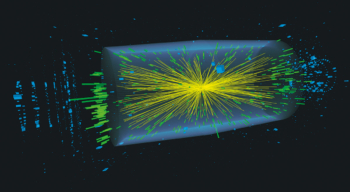Calculations of the structure of heavy nuclei have long suffered from the difficulties presented by the sheer complexity of the many-body system, with all of its protons and neutrons. Using theory to make meaningful predictions requires massive datasets that tax even high-powered supercomputers. Recently researchers from Michigan State and Central Michigan universities have reported dramatic success in stripping away much of this complexity, reducing computational time from days or weeks to minutes or hours.
One way to tackle the many-body problem is first to construct mathematical functions that describe each particle, and then start multiplying these functions together to get some idea of the underlying physics of the system. This approach of making the full configuration-interaction (CI) calculation works well enough to describe light nuclei, but becomes extremely challenging with heavier elements. For example, to calculate wave functions and energy levels for the pf-shell structure of 56Ni, it means in effect solving an equation with around 109 variables.
Researchers face a similar problem in quantum chemistry in studying molecules with many dozens of interacting electrons. For several years, however, they have used a computationally cost-effective alternative to CI known as coupled-cluster (CC) theory, which was originally suggested in nuclear theory, but largely developed by quantum chemists and atomic and molecular physicists. Now the CC method is making its way back into nuclear physics, first in calculations of light nuclei, and most recently in developments for heavy nuclei. The key is correlation, the idea that some pairs of fermions in the system (whether nucleons or electrons) are strongly linked and related.
The researchers first used the Michigan-State High Performance Computing Center and the Central Michigan Center for High Performance Scientific Computing for the several-week-long task of solving the CI equation describing 56Ni, to create a benchmark against which they could compare the results of the CC calculation (M Horoi et al. 2007). They found then that the CC theory produced near identical results and that the time spent crunching the numbers – on a standard laptop – was often measured in minutes or even seconds.
This research bodes well for next-generation nuclear science. Because of existing and planned accelerators around the world, the next few decades promise to yield many heavy isotopes for study. Theoretical models will need to keep pace with the expected avalanche of experimental data. To date, many such models have treated the nucleus as a relatively undifferentiated liquid, gas or other set of mathematical averages – all of which tends to gloss over subtle nuclear nuances. In contrast, coupled-cluster theory may be the only manageable and scalable model that takes a particle-by-particle approach.
Further reading
M Horoi et al. 2007 Phys. Rev. Lett. 98 112501.





